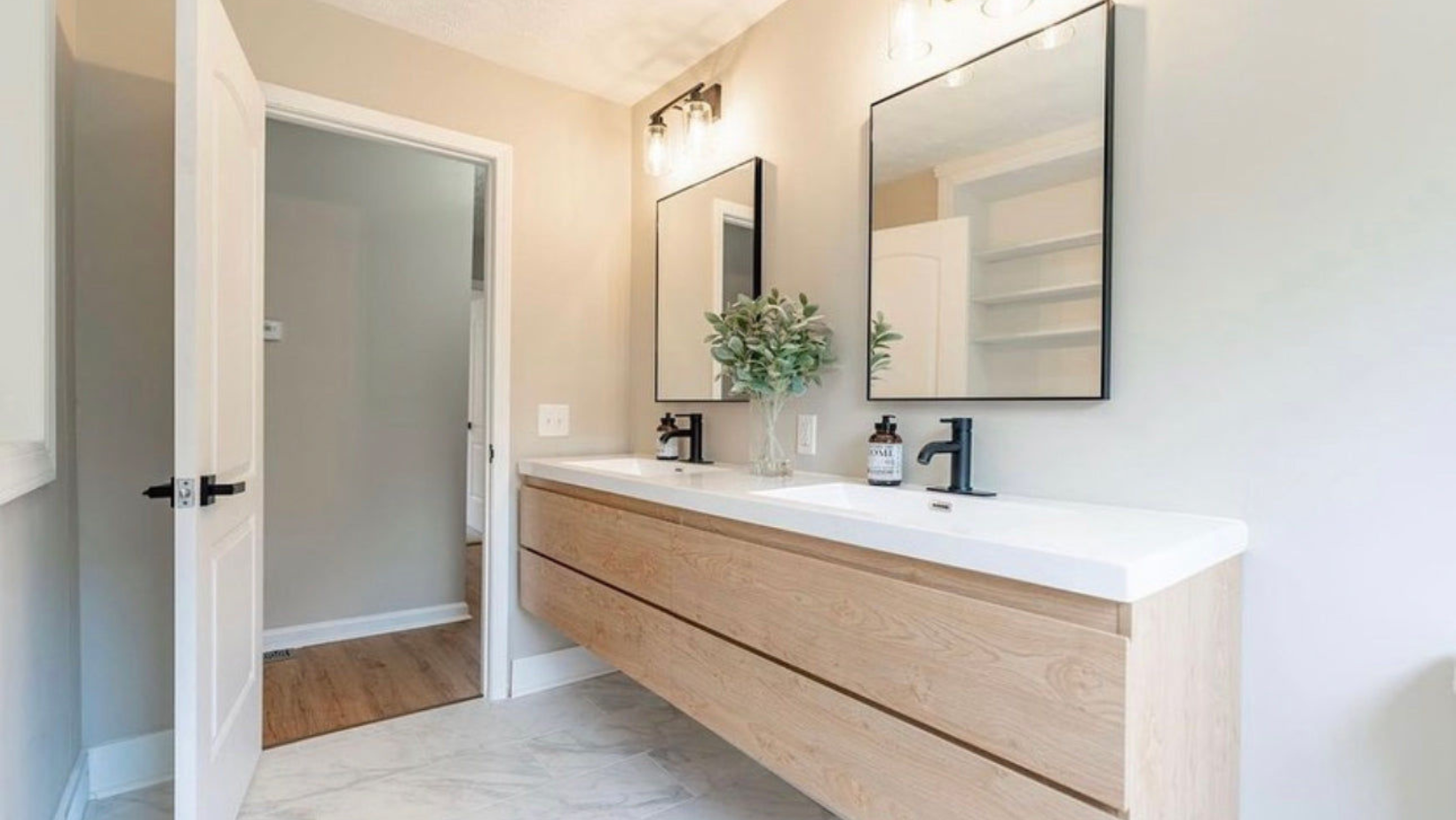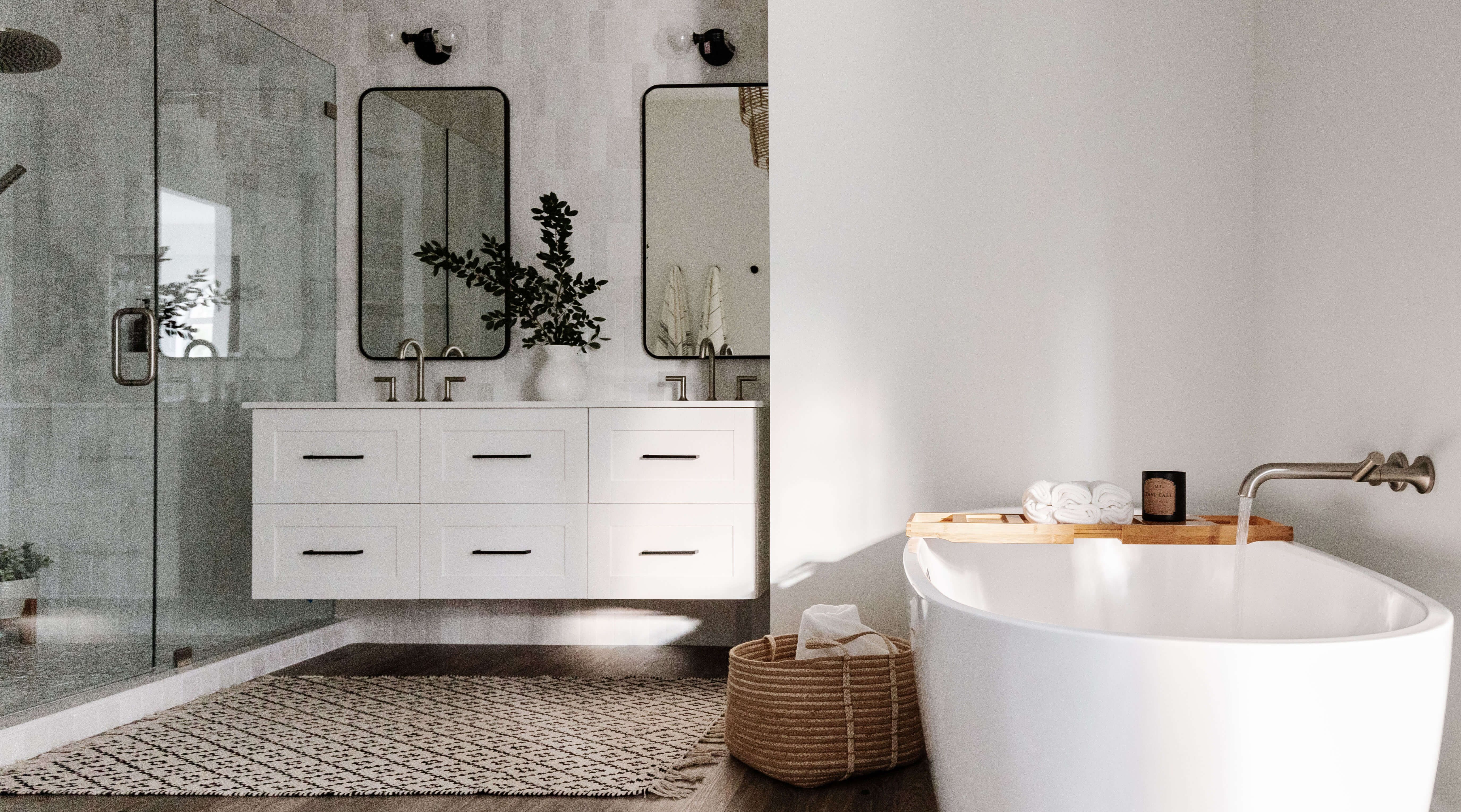The Appeal of Floating Vanities

Floating vanities have become a popular choice for modern bathroom designs, offering a blend of style and functionality. Their sleek and minimalist aesthetic adds a touch of sophistication to any bathroom, while their practical advantages make them a highly desirable option for homeowners.
Aesthetic Benefits
Floating vanities are renowned for their modern and minimalist appeal, creating a sense of spaciousness and lightness. The absence of bulky legs or base cabinets allows for a clean and uncluttered look, enhancing the overall visual appeal of the bathroom. Their sleek lines and contemporary design seamlessly integrate with various bathroom styles, from minimalist to industrial.
Practical Advantages
Floating vanities offer several practical advantages that contribute to a more functional and efficient bathroom.
- Maximized Floor Space: The absence of a base cabinet beneath the vanity creates a more spacious and open feel, especially in smaller bathrooms. This allows for easier cleaning and movement around the bathroom.
- Enhanced Accessibility: The open space beneath the vanity provides easier access for cleaning and maintenance, ensuring a cleaner and more hygienic bathroom environment.
- Visual Appeal: Floating vanities create a sense of openness and lightness, making the bathroom appear larger and more inviting. The sleek and minimalist design adds a touch of sophistication to the space.
Suitability for Different Bathroom Styles
Floating vanities are a versatile design element that can be incorporated into a wide range of bathroom styles.
- Modern and Contemporary: Floating vanities are a staple in modern and contemporary bathroom designs, complementing the sleek lines and minimalist aesthetic of these styles.
- Minimalist: The clean lines and uncluttered design of floating vanities perfectly align with the minimalist philosophy, creating a serene and uncluttered bathroom space.
- Industrial: The combination of sleek lines and robust materials often used in floating vanities complements the industrial aesthetic, creating a balanced and stylish look.
Design Considerations for Floating Vanities

Floating vanities offer a sleek and modern aesthetic, but their design requires careful consideration to ensure functionality and style. Choosing the right size, material, color, and storage options is crucial for creating a bathroom that is both beautiful and practical.
Vanity Size
The size of your floating vanity should be determined by the available space in your bathroom and your personal needs. Smaller vanities are ideal for compact bathrooms, while larger vanities provide ample storage and counter space. Consider the width of your bathroom, the size of your sink, and the amount of storage you require. A general rule of thumb is to choose a vanity that is at least 24 inches wide for a single sink and 48 inches wide for a double sink.
Vanity Material
Floating vanities are available in a wide range of materials, each with its own unique properties. Some popular options include:
- Wood: A classic and versatile material, wood vanities can be stained or painted to match your bathroom décor. Popular wood choices include oak, maple, cherry, and walnut.
- Laminate: A cost-effective option that offers durability and resistance to moisture. Laminate vanities are available in a wide range of colors and patterns.
- Acrylic: A non-porous material that is easy to clean and maintain. Acrylic vanities are often available in bold colors and modern designs.
- Stone: A luxurious and durable material that adds a touch of elegance to any bathroom. Stone vanities are typically made from granite, marble, or quartz.
Vanity Color
The color of your floating vanity should complement the overall design of your bathroom. Light colors can make a small bathroom feel larger, while dark colors can create a more dramatic and sophisticated look. Consider the color of your walls, floors, and other bathroom fixtures when choosing a vanity color.
Vanity Storage
Floating vanities offer a variety of storage options to keep your bathroom organized. Some vanities have drawers, while others have open shelves. Consider your storage needs and choose a vanity that offers the right combination of drawers and shelves. For example, if you need a lot of storage space, a vanity with multiple drawers might be a good option. If you prefer a more open and airy look, a vanity with open shelves might be a better choice.
Sink Type, Bathrooms with floating vanities
The type of sink you choose for your floating vanity will affect its overall appearance and functionality. Here are some popular sink options:
- Undermount Sinks: These sinks are installed beneath the countertop, creating a seamless and modern look. Undermount sinks are typically made from stainless steel, porcelain, or composite materials.
- Vessel Sinks: These sinks sit on top of the countertop and are often made from ceramic, glass, or stone. Vessel sinks offer a unique and decorative look, but they can be more difficult to clean than undermount sinks.
- Integrated Sinks: These sinks are integrated into the countertop, creating a single, continuous surface. Integrated sinks are often made from solid surface materials, such as Corian or quartz.
Lighting and Mirror Placement
Proper lighting and mirror placement are essential for creating a functional and aesthetically pleasing bathroom. The lighting should be bright enough to provide adequate illumination for grooming tasks, but not so bright that it creates glare. A combination of overhead and task lighting is ideal. The mirror should be placed at a height that is comfortable for use, and it should be large enough to provide a clear view of your reflection.
Installation and Maintenance of Floating Vanities: Bathrooms With Floating Vanities

Installing a floating vanity can be a DIY project for those with some basic construction skills, but it’s recommended to consult with a professional plumber or contractor for complex installations. Proper installation ensures the vanity is securely mounted and the plumbing is correctly connected. Regular maintenance helps keep your floating vanity looking its best and extends its lifespan.
Installation Steps
Installation involves several steps, including wall preparation, mounting, and plumbing connections. Here’s a breakdown of the process:
- Wall Preparation: The first step is to prepare the wall where the vanity will be mounted. This involves ensuring the wall is sturdy and level. If the wall is drywall, you may need to install additional support beams to ensure the vanity’s weight is properly distributed. You’ll also need to mark the wall for the vanity’s position and ensure it aligns with the plumbing lines.
- Mounting the Vanity: Once the wall is prepared, you can mount the vanity. This usually involves using specialized brackets or a mounting plate that attaches to the wall. Carefully align the vanity and secure it to the wall using screws or other fasteners.
- Plumbing Connections: The final step is to connect the vanity’s plumbing. This includes attaching the sink drain, connecting the water supply lines, and ensuring the plumbing is properly sealed. It’s essential to use high-quality plumbing materials and follow the manufacturer’s instructions for proper installation.
Maintenance Tips
Maintaining a floating vanity is crucial for keeping it looking its best and preventing damage. Here are some tips:
- Regular Cleaning: Clean the vanity regularly using a mild cleaner and a soft cloth. Avoid harsh chemicals or abrasive cleaners that could damage the finish. Pay particular attention to the sink and countertop, as these areas are prone to stains and buildup.
- Inspecting for Leaks: Regularly check for leaks around the sink and plumbing connections. Even small leaks can cause damage over time. If you notice any leaks, address them promptly.
- Addressing Potential Issues: Over time, you may encounter issues with the vanity, such as loose screws or damaged brackets. It’s essential to address these issues promptly to prevent further damage. You may need to tighten screws, replace damaged brackets, or consult a professional for repairs.
Choosing a Contractor or Plumber
Choosing a reputable contractor or plumber is essential for ensuring a successful installation and addressing any maintenance issues. Look for a contractor or plumber with experience in installing floating vanities. Request references and check online reviews to get an idea of their reputation. Be sure to discuss your specific needs and budget with the contractor or plumber before hiring them.
